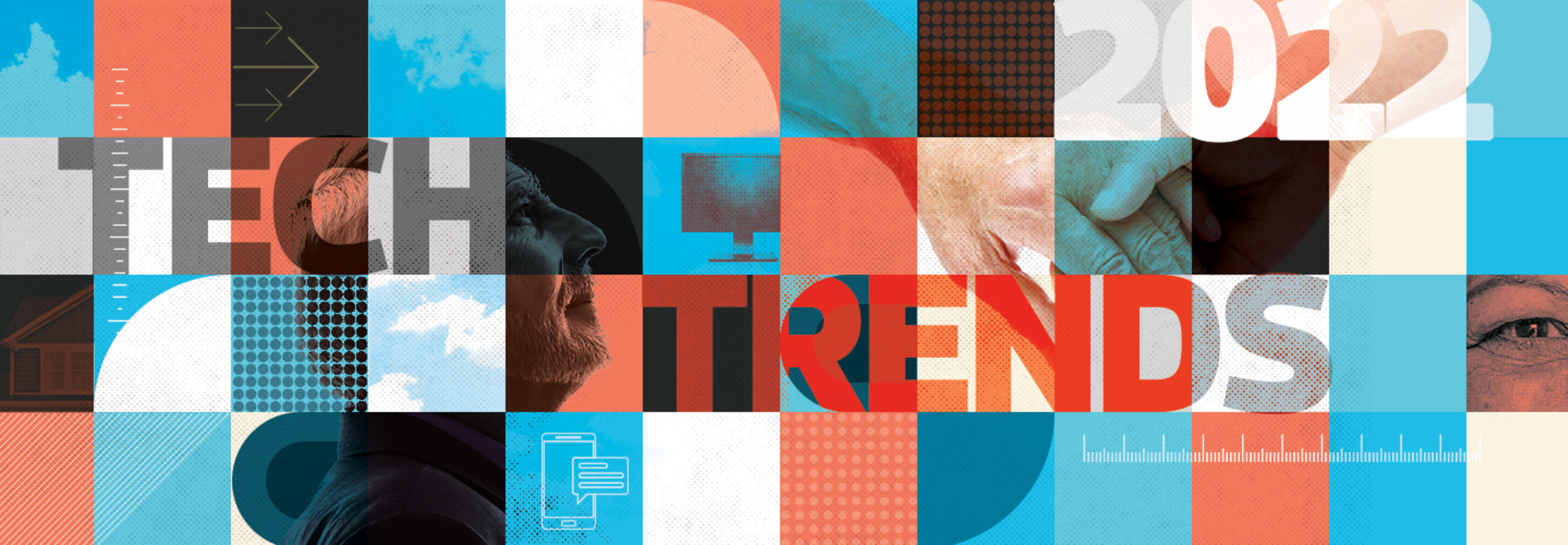1. Senior Care Will Continue to Adopt the Hospital-at-Home Model
Hospital-at-home is a growing trend in healthcare, as increased adoption of virtual care technologies allows for the care of seniors with acute conditions to take place at home. A 2018 AARP survey found that 76 percent of adults ages 50 and older prefer to stay in their homes and communities, aging in place rather than moving to an independent living community. According to the American Hospital Association, the hospital-at-home care delivery model has been shown to reduce costs, improve outcomes and enhance the patient experience.
Traditional healthcare organizations have a role to play in this care delivery model, using telehealth and remote patient monitoring to extend care to the home setting.
“Healthcare no longer needs to be defined by the walls of the hospital,” says Kristin Molina, business leader for enterprise care collaboration at Philips. “By leveraging interoperable, cloud-based solutions that inform data-driven decisions, clinicians can maintain visibility into patients’ well-being at home.”
READ MORE: Learn how to leverage smart technology to enhance the senior care experience.
2. Organizations Will Create Tech Concierge Roles to Assist Seniors
Tech ownership, adoption and use among older adults increased during the pandemic, with nearly half of those surveyed by AARP reporting that they used video chats more than before. With growing use of texting, email, smartphones and wearable devices also on the rise, seniors are using more technology than ever before, and this is likely to continue.
However, increased technology use can place an additional burden on independent living facility staff, who may be relied upon to troubleshoot issues. In response, many organizations are creating tech concierge roles to assist seniors with tech issues and setting up new devices.
“As older adults decide whether to stay in their own residence or move to a community, they will certainly scrutinize the tech capabilities available. Where is Wi-Fi more accessible? Will there be support for multiple devices? If they’re already getting that support at home, why would they want to move into an independent living community?” asked Jessica Longly, business development strategist for CDW Healthcare, in a blog. “If care organizations for older adults want to create personalized experiences for each resident, they should consider including technology-based questions as part of their onboarding process (if they haven’t already).”
DISCOVER: Learn how smart technologies create a connected environment for older adults.
She points out that one community found that residents were willing to pay for a tech concierge service because technology was important to them.
As staffing shortages continue into 2022, many senior care centers will need to turn to solutions such as the tech concierge to meet seniors’ technology needs.
3. Consumerization Will Give Seniors More Control Over Their Health
Wearables and apps are putting health data in consumers’ hands. The Office of the National Coordinator for Health IT’s Cures Act Final Rule will require healthcare organizations to provide patients with all of their health information next year, which will create even more patient involvement in healthcare.
This trend will give older adults more information and empower them to be active in decision-making about their health.
A recent survey from AgingChoices found that 92 percent of prospects surveyed expect a personalized experience from their communities. Creating actionable insights based on patient data and including older adults in their healthcare journey is one way to offer personalization.
RELATED: Learn best practices and potential pitfalls for monitoring in senior communities.
Another impact of consumerization on senior care is that older adults are growing more comfortable with technology and are joining independent living communities’ selection committees to make decisions about which technologies the community will acquire.
Moving into 2022, consumerization and the desire for personalization are expected to impact the types of technology preferred by older adults and offered by independent living communities, as well as the ways seniors interact with digital health solutions.











